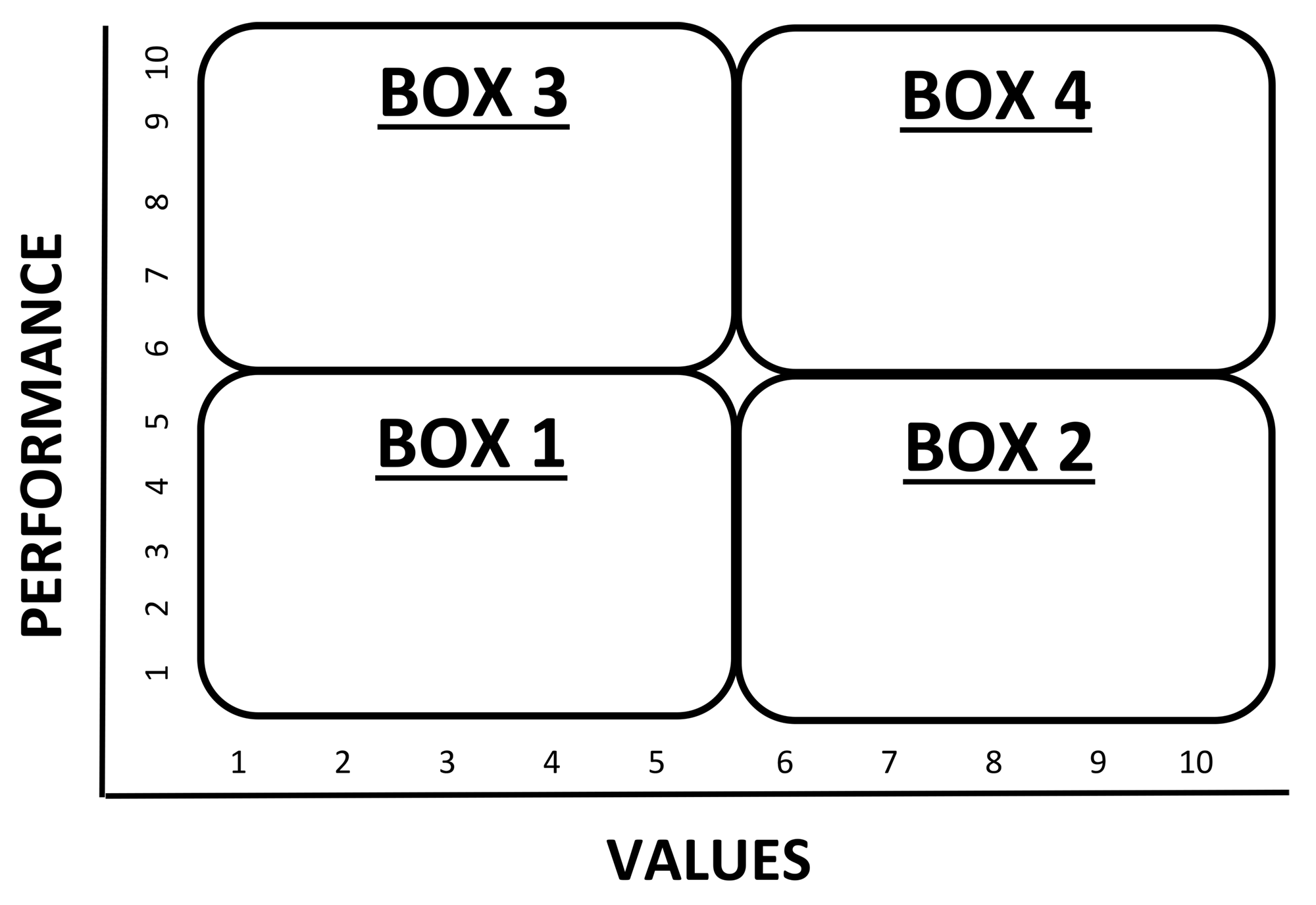by Mark Sanna, DC, ACRB Level II, FICC •
President & CEO Breakthrough Coaching •
As a chiropractic practice owner or manager, you make dozens of decisions every day that affect your practice’s success. However, there are few decisions that are as important as hiring the right members for your practice team. Bringing the right person onboard your team can make the world of difference, while a wrong hire can waste time and resources. One of the most important things to remember about hiring is that it’s about a whole lot more than just filling a seat. Instead, it’s about getting the right people in the right seat. Once you find the right team members, retaining highly talented people who embrace your practice’s values, vision, and standards is an ongoing process.
Developing and sustaining a practice culture that is both values-centered and performance-driven can make both attracting and retaining great people easier. However, attempts at developing practice mission and values statements often lose momentum. In time they become no more than wall decorations because the practice leaders fail to hold themselves and their team members accountable to these values.
The Jack Welch Performance-Values Matrix
Nothing can damage team morale more than when leaders tolerate team members who deliver results, but exhibit behavior that is incongruent with the values of the practice. For example, a practice that upholds the value of teamwork will suffer, over the long term, if an individual team member habitually claims all the credit for the team’s accomplishments. Former General Electric Chairman and CEO Jack Welch developed a simple, yet powerful Performance-Values Matrix that helped GE build a high-performance, world-class culture that made the company one of the most successful of all times.
The Welch Matrix evaluates team members and leaders along two critical dimensions:
- Performance: how well a team member achieves important results
- Values: how well a team member exemplifies your practice’s core values
Core values are the behaviors that form the ground rules that guide your team members in how to conduct themselves and work together. Your core values are the foundation of your practice culture. Examples of core values are: Integrity, Work Ethic, Positivity, Respect, and Creativity. Performance can be measured based upon the achievement of key metrics that are under the individual’s control as well as the accomplishment of assigned tasks. Examples of performance metrics are: the number of existing patients recalled, the number of new patients generated from a marketing event, and the number of rescheduled missed appointments. Examples of assigned tasks are: update the Employee Handbook, produce this month’s newsletter, and create a referral alliance with a local business. It is best for performance to be quantifiable. It has been said that what gets measured gets managed—and improves.
Welch and GE executives evaluated team members and leaders in accordance with the Performance-Values Matrix to determine how well they performed the essential tasks of their role in the company as well as how well they fit within GE’s culture. You can use this tool to help drive performance and improve accountability among your practice team members. It provides the basis for evaluating performance as well as coaching performance improvement. This process also keeps your practice values front and center in the minds of your team.
Rate Your Team on the Performance-Values Matrix
Make a list of your practice team members and rate them using a 1 (low) to 10 (high) scale on these two important dimensions:
PERFORMANCE
How well does this person consistently achieve the results we need to be successful?

VALUES
How well does this person consistently embody and embrace our team’s values?

PERFORMANCE-VALUES MATRIX

Once you rate each team member according to where they fall on the dimensions of Performance and Values, place their names in the box where the two dimensions intersect. For example, someone with a Performance rating of 7 and a Values rating of 8, will intersect in Box 4.
After completing this exercise, four categories of team members will emerge:
Box 1: Low Performers/Low Values Match
Box 2: Low Performers/High Values Match
Box 3: High Performers/Low Values Match
Box 4: High Performers/High Values Match
Box 1: Low Performers/Low Values Match
Once you have evaluated your team, you may identify team members who produce poor results and are a poor match for your practice values. These individuals create a tremendous drag on your practice and hold you back. They don’t get their job done and most likely complain about it to everyone else on the team. Working with people in Box 1 is like trying to run a race with a ball and chain shackled to your legs. They slow you down and impede your progress.
These people are Culture Vampires. They both “can’t” and “won’t”. They don’t have the inherent skills necessary to perform the job nor the character and commitment to try to learn them. Because they are not aligned with your expectations for their role, they resist and complain about changes that you need them to make. They are like the one rotten apple in a barrel. Soon, their bad attitude will spoil the attitude of other team members. They insidiously pollute your practice culture for the rest of the team and need to be invited to find success elsewhere. You can coach skills, but you cannot coach values.
Box 2: Low Performers/High Values Match
You will most likely also find some team members that are a strong fit with your values but who are not performing up to the levels required of the job. These are individuals who embrace and live your vision and values, but who have a difficult time producing the results needed to be a high-performing team member. They are good people who mean well. These individuals are well worth your effort to coach and mentor in their skills. Creating a performance improvement plan with clear goals and performance benchmarks, with regular check-ins and accountability, can produce an excellent return on your investment of time and energy.
Box 3: High Performers/Low Values Match
This group of individuals is the most challenging for a manager to deal with. They produce excellent results and have the skills to get the job done, but they behave in ways that are inconsistent with your culture and values. This poses a difficult dilemma for many managers as these individuals perform the tasks of their job very well but are clearly misaligned with the values of your practice. For example, the superstar Accounts Receivable Manager who excels at collecting income for the practice but is regularly absent or late, has an entitled and selfish attitude, and doesn’t get along with the rest of the team. They skip out on team meetings, don’t participate in extracurricular team-building activities, and feel like they are doing the practice a favor by just showing up.
Unfortunately, because of the important role they play on the team and the results they produce, many managers are hesitant to confront these individuals about their poor attitude because they fear losing them and the challenge it will be to replace them. It’s also common for a manager who summons the will to confront the person and say something to not follow through, discipline, or hold them accountable for their actions. This lack of leadership sends confusing and conflicting messages to the rest of the team.
Meanwhile, the rest of the team is usually fed up with the superstar’s bad attitude and the apparent double standards of management and so they mentally and emotionally check out further corroding your culture. Being held hostage by a prima donna superstar is not fun for the manager and the rest of the team. It’s not fun for anyone involved, except for these Culture Killers themselves. Interestingly, when they are finally terminated or leave the practice on their own volition, there is a collective sigh of relief at their departure from the rest of the team. They celebrate the fact that your core values are meaningful to the practice and overall team morale and performance skyrocket.
Box 4: High Performers/High Values Match
This is your sweet spot. This group of people embraces your practice’s vision and values and they consistently get the job done for you and your team. These are the team members who are the backbone of your practice and are essential to your long-term success. They are your Culture Champions.
Build your team with peak-performing Culture Champions. Nurture them and give them a path to leadership. Create a powerful partnership with them to co-lead your team. You can harness their power of influence and credibility to foster and sustain the practice culture you want and need to be successful. Work with them to coach team members in Box 2 (Low Performance/High Values Match) to raise their level of performance. Be sure to acknowledge and appreciate them for what they bring to your team.
The Right Fit
As a practice owner or manager, acknowledge accountability. Hold your team members responsible for their behaviors. Praise and reward those team members who embrace your practice values and course-correct those who do not uphold your values. Don’t make exceptions. Exceptions show your indifference to the importance of upholding your values.
As a team member, know that an essential requirement for your success in the practice is your fit on the team. Your character and behaviors must be congruent with the values of the practice and the needs of your teammates. Remember that even superstar talent can be tarnished by poor behavior. On a regular basis, seek out feedback from your manager and peers. Seek to become a high-performing Culture Champion!
Dr. Mark Sanna is a member of the Chiropractic Summit and a board member of the Foundation for Chiropractic Progress. He is the President and CEO of Breakthrough Coaching (www.mybreakthrough.com 1-800-723-8423).









 ▶︎
▶︎  Why is the Discount Challenge prize amount $15,024? Because that is the average “per-occurrence” fine for Medicare inducements. That’s not $15,024 per patient, that’s not per provider, that’s PER VISIT. Stinks, doesn’t it? To us, the prize amount is worth the investment if we can help our profession better understand proper discounting.
Why is the Discount Challenge prize amount $15,024? Because that is the average “per-occurrence” fine for Medicare inducements. That’s not $15,024 per patient, that’s not per provider, that’s PER VISIT. Stinks, doesn’t it? To us, the prize amount is worth the investment if we can help our profession better understand proper discounting.